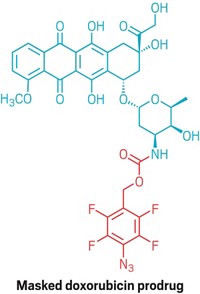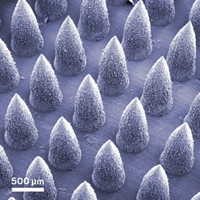Advertisement
Grab your lab coat. Let's get started
Welcome!
Welcome!
Create an account below to get 6 C&EN articles per month, receive newsletters and more - all free.
It seems this is your first time logging in online. Please enter the following information to continue.
As an ACS member you automatically get access to this site. All we need is few more details to create your reading experience.
Not you? Sign in with a different account.
Not you? Sign in with a different account.
ERROR 1
ERROR 1
ERROR 2
ERROR 2
ERROR 2
ERROR 2
ERROR 2
Password and Confirm password must match.
If you have an ACS member number, please enter it here so we can link this account to your membership. (optional)
ERROR 2
ACS values your privacy. By submitting your information, you are gaining access to C&EN and subscribing to our weekly newsletter. We use the information you provide to make your reading experience better, and we will never sell your data to third party members.
Biological Chemistry
Ceria Nanoparticles Act Like Enzymes
Polymer-coated cerium oxide nanoparticles exhibit oxidase-like activity at low pH without the need for hydrogen peroxide as an oxidizing agent
by Stephen K. Ritter
February 16, 2009
| A version of this story appeared in
Volume 87, Issue 7

Polymer-coated cerium oxide nanoparticles exhibit unique oxidase-like activity at low pH without the need for hydrogen peroxide as an oxidizing agent, a finding that could lead to simpler and less expensive immunoassays (Angew. Chem. Int. Ed., DOI: 10.1002/anie.200805279). The nanoparticles created by Atul Asati, J. Manuel Perez, and coworkers at the University of Central Florida's Nanoscience Technology Center are robust aqueous redox catalysts. The team tested the oxidizing capability of the nanoparticles on 3,3′,5,5′-tetramethylbenzidine (TMB) and 2,2-azinobis(3-ethylbenzothizoline-6-sulfonic acid) (AzBTS), which are dyes that undergo a color change when oxidized and are commonly used in horseradish peroxidase-based bioassays. These assays usually require H2O2 as an oxidant to work in conjunction with the enzyme, but the ceria nanoparticles work well at pH 4 without H2O2. Inspired by their success, the researchers added folic acid groups to the surface of poly(acrylic acid)-coated ceria nanoparticles, enabling them to bind to folate receptors, which are overexpressed in many types of cancer cells. When the folate-modified nanoparticles were combined with lung cancer cells and subsequently incubated with TMB, the team saw a color change associated with TMB oxidation, indicating a positive test for the cancer cells.





Join the conversation
Contact the reporter
Submit a Letter to the Editor for publication
Engage with us on Twitter